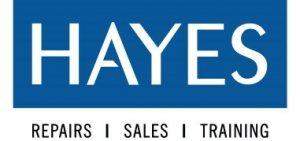Personal Protective Equipment: Putting it On and Taking It Off
Personal protective equipment (PPE) is a must-have for anyone in the dental field, but it can be tricky to put on and take off. Whether you’re wearing gloves or an entire suit, there are many ways to get it wrong. When used correctly, PPE acts as an infection control barrier for viral and bacterial contaminants. The barrier has the potential to block the transmission of contaminants from blood, body fluids, or respiratory secretions. This blog post will explain everything you need to know about PPE so that your entire dental office is confident in reducing workplace infections and hazards and staying compliant with dental OSHA protocols.
Now the steps for donning PPE — obviously we would want to start with a gown — and prior to that perform hand hygiene — putting it on carefully and tying it, depending upon if it’s tied in the back, or a snap down, or a zip down in the front. The next step would be to actually put on a mask or a respirator and secure the ties or elastic bands at the middle of the head and the neck.
Again, you want to ensure that you’re following the appropriate directions for putting that on according to the manufacturer.
And then you would put on goggles or face shield over the face and eyes and adjust the fit. If there is any risk of contamination, you obviously want to make sure that you would then be performing hand hygiene and then putting your gloves on. And in doing so, you’d want to make sure if you have a cuffed gown, that you put the sleeves of the glove up over the cuff of the gown itself.
Now in terms of removing — doffing, — there are two different potential steps that you would follow. The first step, obviously, would be to remove the gloves. The outside’s contaminated. So what you would want to do is grasp the outside of the glove with the opposite gloved hand and sort of peel it back. And then, with that inverted glove, hold the removed glove in your hand and slide the fingers of the under glove in the remaining glove to the wrist, and then peel that one back and dispose of the gloves. If there’s any concern at that point that there’s been contamination on the hands — at that point you would stop and perform hand hygiene.
If you are outside of the room when you are doing this, you would remove the goggles or eye protection next, and as you do that keep in mind that the front of the goggles and the sides of the face mask where the goggles may be contaminated. So you’d want to remove it behind the head.
A second approach would be to remove the gown — front sleeves are always contaminated — unfasten the tides and pull them away and turn the gown inside out and fold it or roll it into a bundle, and then remove the mask. So if you’re in an operatory room and you’re removing your personal protective equipment, it would be best to follow this step, and keep your mask and face shield on until you would exit the room and, obviously, dispose of it in a waste receptacle and then perform hand hygiene.
If you are a dental professional, do not take infection control for you and your staff for granted. Minimize potential health risks and other workplace hazards.
Visit our site, learn the basics, or inquire about more advanced topics with our experts.
Hayes also specialize in instrument sharpening & repairs. Our experienced technicians have decades of experience working with all major brands of dental handpieces including:
A-dec | Beyes | Bien Air | Denticator | Hall | Henry Schein | Impact Air | Kavo | Lares | Midwest | Morita | Nobel Biocare | Nouvag | NSK | Patterson | Schein Master | Shamrock | Star | Strauman | Stryker | W&H | Young | American Eagle | HU Friedy | Nordent | PDT




